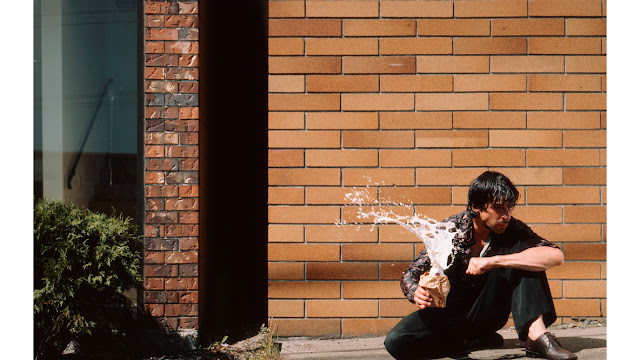The Vancouver School, not a formal school but rather a loosely defined art movement, has emerged as one of Canada's most significant contributions to contemporary art. This movement, centered around Vancouver, British Columbia, in the late 1980s and 1990s, is characterized by its innovative use of photography and video, often infused with themes of urban life, identity, and the impact of globalization. The artists associated with the Vancouver School, such as Jeff Wall, Stan Douglas, Rodney Graham, and Ian Wallace, have gained international acclaim for their thoughtful and often provocative explorations of social and cultural landscapes.
Origins and Characteristics
The Vancouver School artists emerged from a unique cultural milieu. Vancouver, during the late 20th century, was undergoing rapid urban development and cultural shifts, influenced by its increasing role as a Pacific Rim hub. This transformation provided a fertile ground for artistic exploration, particularly in the realms of photography and film.
The movement is not defined by a singular style but rather by a shared approach towards conceptual photography and a penchant for large-scale, backlit images, and filmic techniques. These artists often drew upon the history of cinema, literature, and philosophy to layer their works with rich, narrative depth and critical commentary.
 |
| Jeff Wall - Milk |
Key Figures of the Vancouver School
Jeff Wall is perhaps the most renowned among them, famous for his large-scale, backlit photographs, which resemble movie scenes. Wall's meticulously staged compositions explore the intersection of everyday moments with philosophical inquiries, creating scenes that appear candid but are elaborately constructed. His work "A Sudden Gust of Wind (after Hokusai)" is a prime example, capturing a transient moment with theatrical flair that belies a deep staging process.
Stan Douglas is known for his films and photographs that recreate historical moments, blending technology and storytelling to question the reliability of narrative and historical memory. Douglas's work often involves complex installations that challenge the viewer’s perceptions of time and space.
Rodney Graham plays with literary and historical narratives, often inserting himself into his pieces as a character to explore various personas and time periods. His work is marked by a playful manipulation of cultural references and storytelling conventions, using looping film sequences and installations that disrupt linear narratives and viewer expectations.
Ian Wallace combines photography with elements of minimalism and abstract painting, focusing on the urban landscape and scenes of everyday life. His works frequently address the social dynamics of public spaces and the role of art within society.
Themes and Influences
The Vancouver School artists frequently tackle themes of urban alienation, the construction of public and private spaces, and the role of images in shaping contemporary consciousness. Their works often reflect a deep engagement with the philosophical and aesthetic questions raised by the omnipresence of media images in modern life.
This movement is also deeply influenced by European theorists and philosophers, particularly those associated with the Frankfurt School and post-structuralism, such as Walter Benjamin, Michel Foucault, and Jacques Derrida. Their ideas on art, culture, and society resonate through the works of the Vancouver School, particularly in their focus on how images mediate reality and the complexities of observing and representing the world.
The influence of the Vancouver School extends beyond the confines of British Columbia or even Canada. Exhibitions in major international venues, such as the Tate Modern in London and the MoMA in New York, have showcased these artists' works, cementing their place in the global art scene. Their innovative approaches to photography and video have inspired a new generation of artists worldwide, who continue to explore the capabilities of these mediums in the digital age.
Moreover, the Vancouver School's focus on urban landscapes and the critique of modernity provides a valuable framework for understanding the role of art in contemporary urban societies, where issues of surveillance, gentrification, and cultural erasure are increasingly pertinent.
In conclusion, the Vancouver School represents a pivotal moment in the history of contemporary art, marked by its pioneering use of photographic media to explore complex urban and philosophical themes. Its artists have set new standards for how art can interrogate and illuminate the complexities of human experience in the modern world, leaving a lasting legacy that continues to influence and inspire.



.jpg)







No comments:
Post a Comment